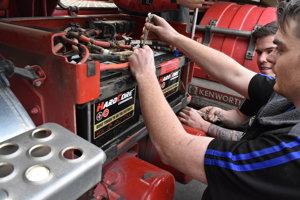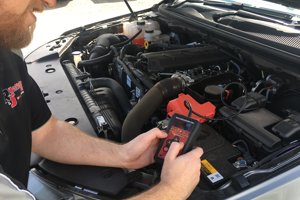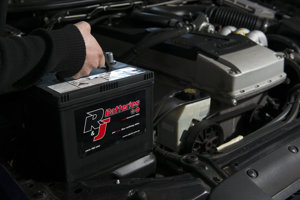Battery Information and Maintenance
Regular maintenance on your vehicle’s battery can increase its life span considerably. Follow the links below on how to care for your battery and for information that will help you choose the best battery for your vehicle.
- Battery Maintenance
- How to Charge your Battery
- Battery Replacement Guide
- Terminal Types
- Battery Terminal Layouts
- Series Connection Diagrams
Battery Maintenance
Taking good care of your battery will ensure the best performance and delivery of power to your car, motorcycle, truck or other application. A few simple checks every three months or so can also help increase your battery’s life-span.
Always think safety first; wear protective eye-wear and gloves when working near batteries.
- Check your battery’s state of charge using the ‘Eye’ or ‘State of Charge’ indicator on the top of the battery. “Green” indicates a healthy battery, “Black” or “Clear” indicates your battery may need charging or servicing. A simple voltmeter or multi-meter can also be used to check your battery’s resting voltage. A reading of 12.6 to 12.9 volts indicates battery is charged.
- Check that cable connections are clean, tight and free of corrosion. Remove any dirt or grime from the battery.
- Check battery for any physical damage or swelling that could be the cause of overheating or overcharging.
- If the battery has removable caps, check the water level at least every 6 months. Replenish with distilled water and don’t overfill as acid needs room for expansion during charging.
- Discharged or flat batteries should be recharged as soon as possible to prevent sulphation damage. Ensure your battery is fully recharged as partial charge will not prevent sulphation.
- Always ensure batteries are fully charged before placing in storage. Ensure charge does not fall below 12.3 volts during storage period.
- Make sure your battery cables are adequately sized to ensure sufficient current flow to and from the battery (aftermarket & auxiliary systems).
If your battery is still not operating correctly, please contact your nearest R&J Batteries store. We can inspect, test and report on your battery’s condition free of charge and provide you with professional advice on how you can get the most from your batteries.
How to Charge your Battery
Think safety first; always wear protective eyewear and gloves when charging batteries.
The best method to charge your vehicle’s battery will depend on the type of battery you have. There are numerous types of Lead Acid batteries and it’s important to use the correct charging method to avoid undercharging or overcharging which can damage the battery.
Your vehicle alternator is a basic battery charger, which will recharge and maintain your battery while the vehicle is running, provided the battery is not too deeply discharged. For deeply-discharged batteries (too flat to start your car) an automatic or smart charger is recommended to thoroughly recharge the battery. These chargers can be used to charge several different battery types due to their multiple stages of charging and ability to determine the battery’s state of charge.
Battery Charging Procedure:
- Check the electrolyte levels and top up with distilled water if necessary. (Accessible Batteries only)
- Check the battery case for damage and remove any corrosion.
- Charging batteries can generate Hydrogen gas. Ensure charging area is well ventilated and there are no sources of ignition (sparks, flames) in the vicinity.
- Before turning on the charger, connect charger leads to the battery terminals: Red positive lead to the positive terminal and Black negative lead to the negative terminal.
- Turn on the charger – never touch the leads when the charger is on
- Select Chemistry (Gel, Wet/AGM, Calcium) on the charger and also charging rate in amps if adjustable. Aim for 10-20% of battery’s Amp-Hour capacity or ring R&J Batteries for assistance if unsure.
- Check battery occasionally while on charge; faulty batteries may overheat. If battery gets too hot, switch off immediately, check that charging rate is not above 20% of battery capacity in Ah, and allow to cool completely before resuming charging.
- Turn off power to charger before disconnecting the charging leads.
- Allow battery to rest for minimum of one hour before checking voltage, to allow surface charge to dissipate. Fully charged battery should read between 12.7 and 13.0 volts.
Some chargers will not charge a battery if the voltage is extremely low (below 7 volts) and you will have to take it in to a battery expert to charge and test it for you.
Keeping a battery charged is a great way to increase the life of your battery and avoid having to replace prematurely. R&J Batteries offer professional charging and testing services that cater for all battery types and can accurately assess your battery’s state of health. Contact us today!
Battery Replacement Guide
Please ensure extreme care is taken when replacing your vehicle’s battery. We recommend wearing safety glasses during the replacement procedure. Make sure the engine, lights and all accessories are turned off before removing the old battery. Check if vehicle has a computerised electrical system. Most vehicles with on-board computer systems require an alternative power source or memory minder to maintain power when the car’s battery is disconnected. Disconnecting the battery on some vehicles without a memory minder may cause fault codes to appear, or potential damage to computerised systems or other electrical equipment.
Always check the replacement battery against the existing battery to ensure it is suitable for the application by matching size, hold downs, terminal configuration, cranking capacity and bonnet clearance.
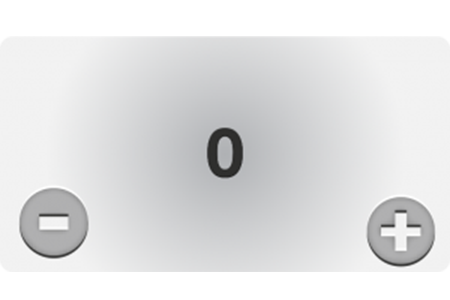
0 = Right Hand Positive (RHP)

1 = Left Hand Positive (LHP)
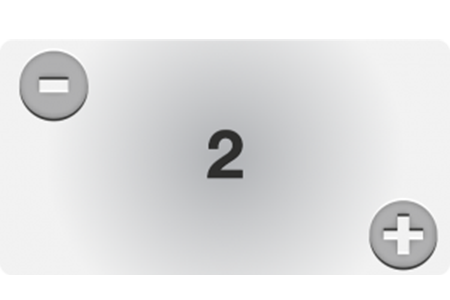
2 = Offset 6V

3 = Centrepost

4 = Right Hand Positive (RHP)

5 = Left Hand Positive (LHP)
Battery Terminals for Different Applications
Battery terminals are the electrical contacts used to connect a load (your vehicle or other machinery) or a charger to the battery. They come in a wide variety of designs, sizes and features depending on the type.
R&J Batteries stocks replacement battery terminals for your batteries at all of their local stores across Australia, suitable for a wide range of brands and models. What type of batter you have will determine the type of battery terminals you require.
Automotive battery terminals
There are typically three types of terminals on automotive batteries, depending on the type of vehicle, whether it is a car, a truck or a recreational vehicle. Some batteries come with terminals in two different configurations. It’s important to ensure you get the right configuration as it may prevent battery cables from reaching.
The three types are:
 SAE Terminals
SAE Terminals
SAE is the standard for most automotive vehicles. Consisting of two lead posts in the shape of truncated cones, positioned on the top of the battery, they have slightly different diameters to ensure correct electrical polarity.

JIS Terminals
The JIS battery terminal is similar to the SAE but smaller. Like the SAE, the positive is larger than the negative, but both are smaller than their SAE counterparts. Most older Japanese cars were fitted with JIS terminals.

L Terminals
L terminals consist of an L-shaped post with a bolt hole through the vertical side. Typically, these are used for batteries in some European cars, motorcycles, lawn and garden devices, snowmobiles and other light duty vehicles.
Marine battery terminals
 Marine Battery Terminals
Marine Battery Terminals
Marine battery terminals typically have dual posts, a 3/8”-16 threaded post for the positive and a 5/16”-18 threaded post for the negative along with a pair of SAE tapered posts
Replacement battery terminals from R&J Batteries
If you’re looking for a replacement battery terminal, look no further than the wide range at R&J Batteries. Our experienced team will be happy to assist you in finding the appropriate replacement terminal for your battery, no matter if you’re looking for a deep cycle, commercial or a specific brand, such as ACDelco. Any questions? Call us on 1300 769 282.
This information is provided as a guide to assist with general battery maintenance and for the choice of replacement batteries. To ensure best results and to avoid premature battery failures consult with a battery expert at your local R&J Batteries store or distributor.

